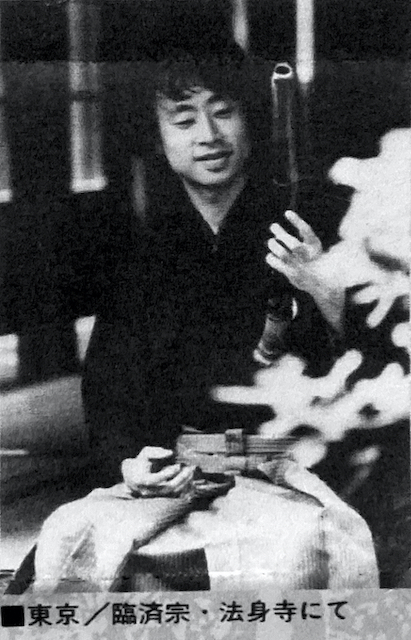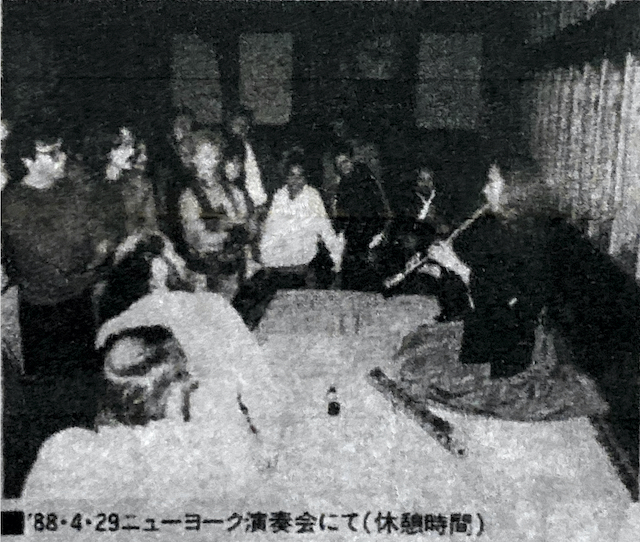SHAKUHACHI Shakuhachi Information
10th Nov. 2019 SUNDAY NIGHT TOKYO CONCERT
2019/10/1

I hope you all are doing well.
In May, we had a meeting with "Tiara Koto" because it was an affordable venue. Although it was a venue where Saturdays and Sundays could hardly be taken, we planned a second meeting this year because it was vacant only on the night of November 10 (Sunday) "That was the trick.)
In the first half, following the lively self-made work ("Together"), we will perform the two major songs of Choi Motoyo, “Juya Night Moon” and “Nyanse”, which are regarded as the best nursery rhyme composers in Japan. We added preludes and interludes without adding extra sound so as not to damage the original song. There is plenty of solo work by both Mr. Kujima and Mr. Iijima who have been studying for a long time and playing this song on the day.
The second half is the rare world of Zen shakuhachi. After the “Sanya” of Sendai / Fubukuro Eden, depicting the scene of the sun shining quietly in the heavenly Iwato, the “Oshu Shuji”, which is said to be a masterpiece, was the final student. Two songs are played: “Tsurunosu-an” (broken) Kyoto Meishin Shinryo, and the most difficult piece “Kakuku” of Hirosaki Tsugaru / Nishiki-style Nishiki-style. Every song is a big song of Okuden and Minaden. We use old pipes with imperfect tuning that do not apply lacquer and powder inside the ground. If there are no big habits in the performance of the elementary school, I would like to add to the seventh and later CDs released in the United States. *
I would like to invite people with whom I have a relationship, but due to the limited number of seats, I will make an official reservation when I contact you with my full name including those I know.
Shakuhachi musical instrument
2019/9/26
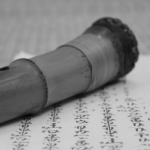 Many Japanese musical instruments are not functional in the same way as Western musical instruments, that is, playing fast, constantly producing large and stable sounds, or composing chords by simultaneously producing multiple sounds. I'm always betting on this one point, the tone. The shamisen sawari (although there is a similar concept to Indian stringed instruments), and the fact that the musicians of folk songs have been particular about playing with silk thread are examples of this tone-oriented appearance.
Many Japanese musical instruments are not functional in the same way as Western musical instruments, that is, playing fast, constantly producing large and stable sounds, or composing chords by simultaneously producing multiple sounds. I'm always betting on this one point, the tone. The shamisen sawari (although there is a similar concept to Indian stringed instruments), and the fact that the musicians of folk songs have been particular about playing with silk thread are examples of this tone-oriented appearance.
再 び Go back to the theme of Japanese musical instruments “tone lovers”. The shamisen “sawari” and the folding musician's commitment to silk are given as examples. The story of Nohkan along with derailment. Speaking of “obtaining a certain pitch with a certain fingering,” Noh tube is no longer an instrument. It is impossible to play a so-called melody in Noh. It is this Noh that is used only to create an atmosphere for describing a scene, beyond the standard of musical instruments. Mr. C. Evert is a teacher at Musashino University because he loves Noh and likes to be a Noh performer, but he cannot fulfill his nationality barrier (they are American men). He often came to listen to concerts in Japanese genres and other genres, and became very close (although I had forgotten all that happened so far). I have been tempted to give him a persistent nobility. At the end, I finally got it out and used it sometimes in studio recordings such as play accompaniment. The super high tone called “Hishigi”, which was peculiar to Noh, did not come out at last. Evert, who is also a master of shakuhachi himself, well understood my interest in the unique existence of Fukizen shakuhachi (classical song) and recommended it to a lecturer at the International Department of Waseda University. Wasn't he the English version of the song “Sumidagawa”?
SHAKUHACHI Shakuhachi Information
17th May 2019 Shakuhachi Concert
2019/5/17
 The long-term trouble with the right finger was also given the official name (finger tendonitis) the other day by a music surgeon. And when I started taking the usual medicines, it was an amazing improvement. So, on the night of November 10 (Sunday), I arranged for one-stage singing alone (in Japan for the first time in 20 years). I would like to invite about 100 people to nominate on our side. At this time, I will play a big song that only this person (that is, me) can play. Please leave a schedule. (Now, we will be away on consecutive holidays.) On May 17, we will invite you (no matter how many) if convenient. (The second half will be played by a student)
The long-term trouble with the right finger was also given the official name (finger tendonitis) the other day by a music surgeon. And when I started taking the usual medicines, it was an amazing improvement. So, on the night of November 10 (Sunday), I arranged for one-stage singing alone (in Japan for the first time in 20 years). I would like to invite about 100 people to nominate on our side. At this time, I will play a big song that only this person (that is, me) can play. Please leave a schedule. (Now, we will be away on consecutive holidays.) On May 17, we will invite you (no matter how many) if convenient. (The second half will be played by a student)
Let's have a good holiday
SHAKUHACHI Shakuhachi Information
28th Aug. 2016 Free Concert
2016/8/28
Shakuhachi 2016/8/28 Free Concert - info

It's a hot summer and a lot of events, but I'm sure you're doing well.
Until today, we have continued to hold the tradition of the virgin priest shakuhachi, a unique art of performing quests. Recently, I found a cool hall, returned to the starting point, and performed “Song of this song”. Only members with more than 30 years of bamboo history will perform withered performances in the Edo period. This time, I will explain by biting as I moderate. Also, in 1987, a graduate student at the University of Music created the second part of the Kotoko-style main song “Mitani Hagigaki” made between San Francisco solo concerts.
(Clarinet) The stage will be premiered with Jutapon's support. The second part was rehearsed several times because the rhythm is quite complicated and difficult. About 8 songs including “Suzuka” and “Crane's Nest” (of which the last 2 songs are played by Isei) There is no need for reservations or applications, so please feel free to drop in on your invitation. Takashi Tokuyama
Honkyoku zanmai concert
Sunday, August 28, 2016, 7:00 pm (30 minutes before opening) Tiara Koto Small Hall
2-2-36-36 Sumiyoshi, Koto-ku (Subway Toei Shinjuku Line / Hanzomon Line, get off at "Sumiyoshi" Exit A4, 4 minutes on foot)
Participation fee free (no reservation required)
14th Mar. 2016 Vienna performance note
2016/3/14
 Arrival in Vienna
Arrival in Vienna
In November 2015, I successfully completed three concerts in Vienna that had been planned for two years.
The venue was different from the Embassy of Japan Cultural Center, University of Vienna (sponsored by the Department of Japaneseology), and Buddhist Center (sponsored by the Philosophy Department of the University of Vienna).
”Arrived on the evening of the 2nd, contacted Noriko Brandle, who was indebted to me, and then went to the venue for the next day. However, it is the Japanese embassy that is not enough to walk. Facing the street, the entrance to the Cultural Center. As soon as we arrived, the dinner was a rice ball bought at Narita, a staple of recent overseas trips. Although saltiness is reduced, it is enough for the belly that has been trapped in the plane for a long time and is reversed day and night. German-speaking hotels do not have pots in their rooms, so bring a few tea bottles of tea and buy gas-free water locally. I will stay for a whole week, so I will buy unlimited tickets on the bus, subway and tram. There is no ticket check for a stable society with high mutual trust.
Day 2
The next day, take a tram for 30 minutes and head to Heiligenstadt, famous for Beethoven's writing of his will. (more…)
SHAKUHACHI Shakuhachi Information
17th FEb. 2013 Shakuhachi Classic Concert
2013/1/15
 It's early, and this month is over. Will we be fine next year? I will be getting a pension. Is this year intentionally? I had a lot of New Year's cards. E-mail with photos of Estonia's performance (after 8 years) with Sesse from the end, with the intention of increasing information density and interacting more than once a year's formal greetings (because of the Internet era) Is sending. (If you haven't sent it yet, please send us a request.) Locally, in a seaside hut, I met an old man who was studying Esperanto alone, and heard a group of frogs suddenly appearing over the wetland of a quiet national park. I received it. At the music festival, I played with Iranian masters, Danish masters (blowing whistle with one hand and tapping drums with the other hand), old violins and harps.
It's early, and this month is over. Will we be fine next year? I will be getting a pension. Is this year intentionally? I had a lot of New Year's cards. E-mail with photos of Estonia's performance (after 8 years) with Sesse from the end, with the intention of increasing information density and interacting more than once a year's formal greetings (because of the Internet era) Is sending. (If you haven't sent it yet, please send us a request.) Locally, in a seaside hut, I met an old man who was studying Esperanto alone, and heard a group of frogs suddenly appearing over the wetland of a quiet national park. I received it. At the music festival, I played with Iranian masters, Danish masters (blowing whistle with one hand and tapping drums with the other hand), old violins and harps.
Now, for the past three years, we have spent a great deal of time to play the most difficult piece of the shakuhachi classic in memorabilia. Thanks to that, through 8 meetings, the memorization progressed to the extent that it can cover 4-5 solo concerts, but I left a few songs and was short of breath. I am sorry for the shakuhachi god that I will not do anything for a while, so I planned to meet with two veterans who only teach once a month. For the past 40 years, I have been doing Scrap and Build with “Shinkyoku Study Group”, “Classic Book Tokuyama”, “Punhua Doyukai”, and when I spoke to my disciples at that time, Now that there are seven people, each person chooses one song, a masterpiece of gems, and has them play. I'm looking forward to seeing what kind of sounds and blows since they are all over 25 years old. (Of course, I'll also play one song at the end. (Sashi) "). No reservation is required. Please go out comfortably.
Takashi Tokuyama and his friends, Shakuhachi Classical Music Concert, Sunday, February 17, 2:00 pm (1:30 pm)
At Rinzai School Hoshinji, 3-82 Haramachi, Shinjuku-ku, telephone 03-3202-4876
(Toei Oedo Line, Ushigome Yanagicho, get off at West Exit 3 minutes)
Sen Kido 1000 yen (at the venue on the day)
24th Apr. 2010 About funeral of Takae Takebayashi
2010/4/24
This is Takashi Tokuyama.
Takatomo Takeuchi, Chikurin, who was indebted to us at the seminar and Takeoniki (Brown Rice Vegetarian and Fukizen Shakuhachi Association), passed away on April 15.
The night was held only by relatives and the farewell ceremony was at Atami where my parents were. I remembered my relationship with her, and I contacted her in my heart. I have also heard that there are many other people who have a relationship with Chiclin. If anyone other than the above mentioned contact person knows, I would like to ask you to forward it to memorize the memories of the deceased.
April 20th (Tue) 10:00 am
Atami City Saijo 1802-1 Atami City Atami (8km from JR Kurumiya Station, 10 minutes by car, near Himenosawa Park)
In addition to the above activities, I took on the witness when she was married to the United States (it seems like a matchmaker on a document that guarantees marriage in that area), and in the 1980s, He was the manager of a nationwide performance tour. After that, Chikurin became a Oriental medicine qualification and opened locally. I have heard that my child who had visited there was a good job and wanted to live permanently, but I came home because of my parents who had retired in Atami. (more…)
3rd Oct. 2009 Travel around Germany
2009/10/3
 In the last week of June, I took a 9-day tour to see only Germany using my family holiday.
In the last week of June, I took a 9-day tour to see only Germany using my family holiday.
A regular tour of a major travel agency, it was also cheap (like us), there were people who switched from other plans, a total of 39 Nantes.
I went out thinking that it would not be possible to organize or interact with this number of people as a whole, but my expectations were completely lost. Two super-aggressive couples became the catalyst, and the barriers often associated with group trips were removed. I have often said that my husband is a choir. The doll shop in Ryogoku and the retired school principal in Misawa have a wife who is not inferior to her husband's super-extrovert, and the couple actively engaged in diplomacy. It can be said that this has propagated considerably.
There were 86-year-old men traveling alone and two nephews from the Jodo sect, and their existence was conspicuous. Speaking of 86 years old, it is two years higher than my mother-in-law who lives with me. Mother-in-law travels around the world until 75 and 6 years old (and it is still a remote area) and still goes by train to poetry and calligraphy classes. Still, recently, long-time vehicles are difficult, so considering that, traveling alone at the age of 86 is a miracle. However, this man is said to be extremely poor in darkness and sleep in a room with a machine to relieve his apnea symptoms. After I knew my age and asked about this, I was working hard. I heard a variety of stories, such as the wife who was shocked by his hospitalization being beaten first, and since he was alone he has been actively involved in day homes etc. It was. (more…)
Shakuhachi Classic No.5
1987/11/18

01 Garyoken takeshirabe
02 Chikugo sashi
03 Neri sashi
04 Takahe sashi
05 Uta renbo
06 Koro suga gaki
07 Yamato choshi
08 Takane takeshirabe
09 Azusa no Kyoku
10 Shiomotsuke no kyoku
11 Futaiken reibo
Shakuhachi Classic No.5 KUMO-I
Player: Takashi Tokuyama
Duration: 60 minutes
Recording: 1987/11 / 12,13
Shakuhachi Classic Tokuyama Group
Copyright C 2019 by Takashi Tokuyama
01 Garyoken takeshirabe (5:28)
02 Chikugo sashi (5:14)
03 Neri sashi(3:22)
04 Takahe sashi(5:03)
05 Uta renbo(3:12)
06 Koro suga gaki(6:38)
07 Yamato choshi(3:00)
08 Takane takeshirabe(3:08)
09 Azusa no Kyoku(5:11)
10 Shiomotsuke no kyoku(6:11)
11 Futaiken reibo(12:28)
This recording was recorded at a villa in the suburbs of Atami from midnight on November 12, 1987 to dawn on March 13. While riding in the recording staff's car, breathing in Ehime's 8 inch tunes and terrestrial songs (i.e. Kagetsu 8 inch borrowed from Aichi Inagaki for recording) I went to the mountain villa while putting. Soon after the setting was completed and recording started smoothly, it started to rain and I had to interrupt it. Although it is planned to be next, it will not stand. When I was waiting for a prayer, it soon rained and I was able to play again. I wanted to make two copies if possible in the recording over 5 hours, but I carefully selected them from the time and composition of the songs and put them together in the fifth volume. The rest of the sect of Nishiki-style is also finished, so please look forward to it after the sixth volume. As with the previous volume, this one volume alone was designed so that the entire picture of the shakuhachi classic can be seen. Up to this volume, we have used one shakuhachi 8 inch tuning, but in the future we plan to record even a long wall with no ground.
Shakuhachi Classic No.4
1985/12/25

01 hahi gaeshi (3:48)
02 sagari ha (3:38)
03 futaiken san ya(9:57)
04 shin no kyorei(13:29)
05 shinporyu hachi gaeshi(2:52)
06 hokkoku hachigaeshi(3:39)
07 echigo meianji hachigaeshi(4:47)
08 oshu reibo(6:18)
09 tsuruno sugomori(11:11)
Shakuhachi Classic No.4 DOH
Performer: Takashi Tokuyama
Duration: 60 minutes
Recording: 1984/10/12, 10/25
Mixing engineer: Kazuo Matsuzaki
Copyright C 2019 by Takashi Tokuyama
01 hahi gaeshi (3:48)
02 sagari ha (3:38)
03 futaiken san ya(9:57)
04 shin no kyorei(13:29)
05 shinporyu hachi gaeshi(2:52)
06 hokkoku hachigaeshi(3:39)
07 echigo meianji hachigaeshi(4:47)
08 oshu reibo(6:18)
09 tsuruno sugomori(11:11)
Volume 4, which was a difficult birth, was finally completed. Side A from October 12, 1985, Togakushi Village, Togakushi Folk Museum, Togakushi Daiwa Shakuhachi no Eve, and Side B, October 25, Tokyo Ushigome Hoshinji “Fukizen and Zazen Evening” Live recording from. A group called “Bamboo / Sound / Ki” that regularly offers a party to listen to brown rice vegetarian food and Fukuzen shakuhachi from acquaintances at iBD seminars that I have been deeply involved in. I used to play the shakuhachi only once in a place where iBD is a seminar that “knows its own value”. At that time, I listened to it, and later Sayaka Sasaki, who became a member of bamboo, sound, and ki, worked with an acquaintance Ryuhei Satono (runs the lodge "Tanne" at Togakushi),
and the shakuhachi meeting at Togakushi was realized. did. Mr. Satono presided over a concert centering on classical music at his lodge, and also visited the Fuzen-kai at the Hoshinji Temple in Tokyo, where he listened to my classical music. In the Asahi Shimbun the day after the meeting, “Togakushi Cram School” consisting of ten people from Minshuku ’s representatives, including a guest house and a ceramic artist, called on the shakuhachi. It was introduced with photos that the meeting was planned.
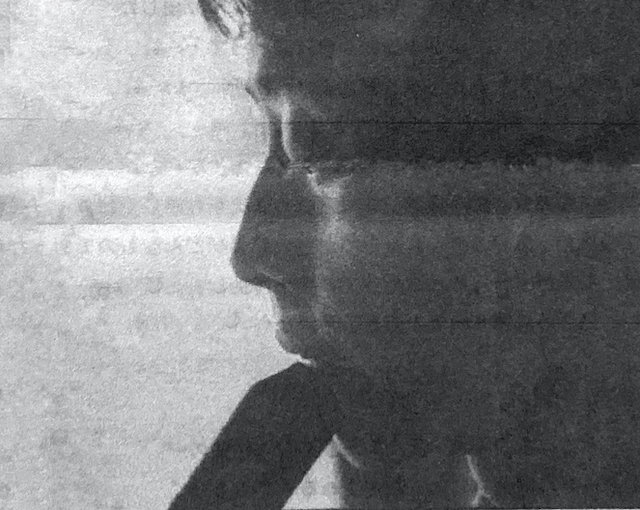
Shakuhachi Classic No.3
1985/8/31
01 mukaiji (20:49)
02 yoshiya (7:52)
03 o-tai(2:11)
04 san ya(8:56)
05 kumoi jishi(9:07)
06 hokkoku reibo(6:37)
07 aji kan(5:21)
Shakuhachi Classic No.3 SUYO
Player: Tokuyama Takashi
Duration: 60 minutes
Recording: 1984/11/17, 1985/8/3
Mixing: Kazuo Matsuzaki
Honkyoku Kenkyu Kai
Copyright C 2019 by Takashi Tokuyama
01 mukaiji (20:49)
02 yoshiya (7:52)
03 o-tai(2:11)
04 san ya(8:56)
05 kumoi jishi(9:07)
06 hokkoku reibo(6:37)
07 aji kan(5:21)
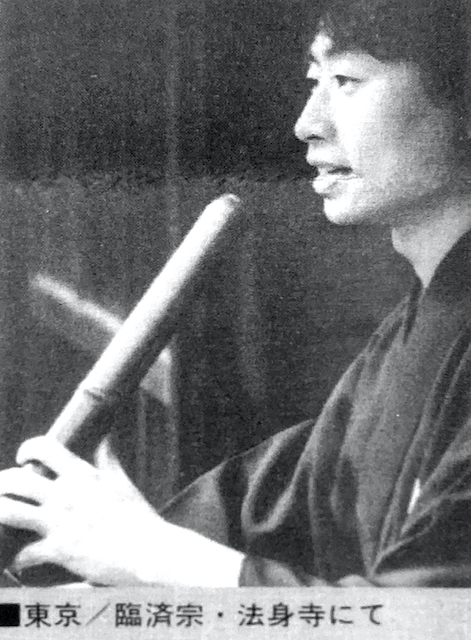
Here is the third volume. Live recording is finally here. In Tokyo Ushigome HOSSHINJI, we open “Fukizen Shakubachi no Eve”, where the student blows through this song, with Daizen Obuchi resident zazen teaching in between. "Mukaji" has been recorded since the 10th of August 3, 1985. Hoshinji is a Rinzai Buddhist temple, and since the Edo period, it has been the main head of the Punka Shakuhachi (classical main song), the Ome Reiho-ji Bodoji Temple. Saving.
At the meeting in August, Mr. Kosuge said, “Shakuhachi as HOUKI values the simplicity and pure tone, and it is better to talk to the self and the listener's Buddhist character—the clean heart that is born”. Then, after the participants took the form of zazen, he went to Fukizen (Kurumi) and led to INKIN (bell). I am enlightened by the story and remember that I was in a stable and deep blown zen. In the middle of the summer, along with the sound of a housewife in the neighborhood watering from the window on the second floor, it is accompanied with fun. The shakuhachi classical music is a valuable cultural heritage in Japan as an independent pure instrumental music that is not an accompaniment of songs or other types of performing arts, or as Buddhist music. Aiming at the preservation of historical materials and the reconstruction of the generalized shakuhachi road, today, the “Non Monk Society” has been established beyond the school. Please gather. Ninja Research Group, 3-82 Haramachi, Shinjuku-ku, 162
Shakuhachi Classic No.2
1984/11/16

01 kyorei (11:41)
02 takiochi (11:35)
03 murasakino no kyoku(11:35)
04 sankara sugagaki(4:33)
05 hirable sagariha(4:06)
06 tamake(5:42)
07 oshu sashi(8:22)
08 renbo nagashi(10:49)
Shakuhachi Classic No.2 KO-REI
Player: Takashi Tokuyama
Duration: 63 minutes
Recording: November 17, 1984
HONKYOKU KENKYUKAI
Copyright C 2019 by Takashi Tokuyama
01 kyorei (11:41)
02 takiochi (11:35)
03 murasakino no kyoku(11:35)
04 sankara sugagaki(4:33)
05 hirable sagariha(4:06)
06 tamake(5:42)
07 oshu sashi(8:22)
08 renbo nagashi(10:49)
This recording was played in November 1984 at a mountain villa in the suburbs of Atami for one hour at a time in the middle of the night. About three hours after I started blowing, I felt that I and bamboo were integrated. Compared to the first volume of the studio recording, which was relatively time-stricken, the performer himself was very satisfied with the result of the second volume.
In order to convey the charm of classical music as music, I intend to devise a way to see the whole classic music with any volume. In addition to providing practical skills guidance, the provision of literature and historical materials, etc., I would like to cooperate with you at any time. I would like to express my sincere gratitude to both teachers.